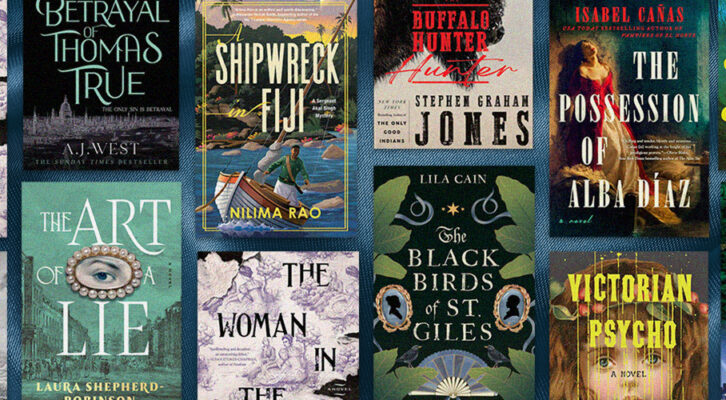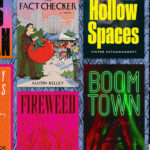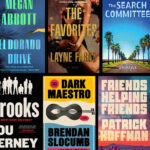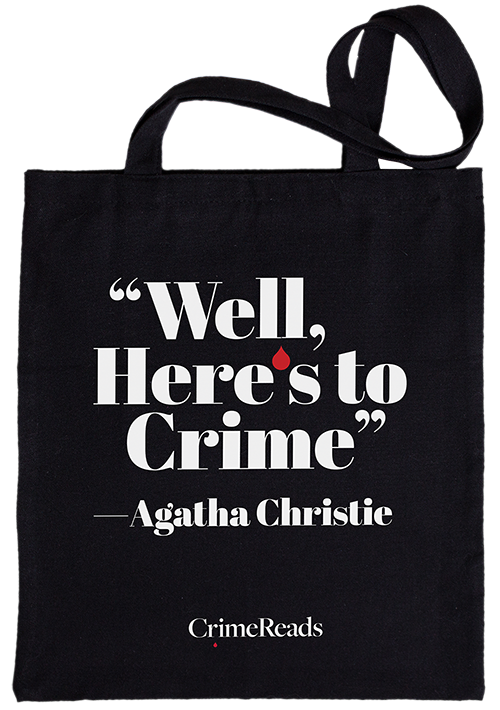Stark House Press celebrated its twenty-fifth anniversary this past year. The publisher has spent that quarter decade dedicated to the cause of bringing many authors and their work back into print, particularly from the hardboiled and noir era of the fifties and sixties. Authors like Day Keene, Lionel White, and “The King of The Paperbacks” Harry Whittington may have been lost to us without their efforts. Early last year, the publisher commemorated these years of their mission with the Stark House Anthology, edited by Stark publisher Greg Shepard and contributor and author Rick Ollerman, and featuring short stories by those authors and many of the others whose work they have kept alive. The anthology also contains a novella by Jada M. Davis, an author who would be completely unknown without them. I talked to Rick and Greg as well as associate editor Jeff Vorzimmer and proofreader Bill Kelly about the anthology, the imprint, its history, and future. As you will see, they are more than their title and they know their crime fiction.
SCOTT MONTGOMERY: What can you tell us about the origins of Stark House?
GREG SHEPARD: Stark House was created as a family affair in 1999, but was soon taken over by myself with reprints of fantasy novels and short stories by Storm Constantine and Algernon Blackwood. Within a short span of time, I started pairing up vintage mystery novels, and the company took off from there.
SCOTT: How would you explain your role in Stark House?
GREG: As publisher, I pick the books, the authors, write the cover copy, create the contracts and have final word on the cover design.
SCOTT: What do you see as the imprint’s mission.
GREG: Bringing back into print some of the great crime authors of the past, and unearthing a few lost treasures along the way.
RICK OLLERMAN: The best thing I think Stark House can do is give new life and new opportunities for discovery of so much great fiction from the past. Some of it is just so, so good and just the Stark House logo on the cover should convey a certain feeling to a reader. There’s so much to be gained from reading these books from the past. It can be nostalgic and atmospheric and urgent in ways that a lot of contemporary fiction cannot.
BILL KELLY: Resurrect forgotten authors whose work deserves republication and works by authors who may be more commonly known, but with titles that have long been out of print; provide introductions that may include biographical information and critical commentary.
SCOTT: How did you all get involved?
GREG: My dad was a newspaper and magazine editor, and he came up with the idea of us creating a publishing company. I simply ran with it.
RICK: I came in through the back door. I had learned of the existence of Peter Rabe from an introduction by Donald Westlake to an edition of his “The Hunter.” Rabe was long out of print and initially I discovered some absolutely pristine Gold Medals at an antiquarian book fair but they were pricey. And then I found the Stark House reprints and they were affordable with informative introductions. There were some typos in the book that drove me crazy and I contacted Greg and offered to do some proofreading for him. I just didn’t want those Rabe books to be less than what they should be. That led to working on “The Silent Wall” and “The Return of Marvin Palaver” which led to writing an introduction to that book which led to me showing Greg my first novel….
BILL: I was a customer and had exchanged some commentary with Greg along the way, so in 2017 when Rick stepped down as proofreader he asked me to take his place.
JEFF VORZIMMER: I was initially hired in 2017 to create ebook editions of the Stark House releases. Soon after I stepped in to take up some of the slack on cover design and have now created over 180 covers. I also fill in for Mark Shepard doing layouts when he’s on vacation.
SCOTT: Who are some of the authors Stark House has published who epitomized the brand?
GREG: Authors like Peter Rabe, Gil Brewer, W. R. Burnett, Elisabeth Sanxay Holding, Jean Potts, Howard Whittington, Barry N. Malzberg, Bernice Carey…..the list goes on.
RICK: To me, there are so many. Stark House has done all of Peter Rabe’s book outside of his Mannix novelizations. There’s the St. Petersburg trio of Harry Whittington, Gil Brewer, and Day Keene. Lionel White. Elisabeth Sanxay Holding. The themed books that showcase writers from publishers Gold Medal and Beacon. Rediscovering mega-sellers like Carter Brown and James Hadley Chase. Orrie Hitt. There are so many….
BILL: Your question goes to the nature of Stark House in the sense that Greg’s selections pretty much cover the spectrum of genre fiction, much of the work crime fiction, but virtually all “sub-genres” are represented as well — in other words there are no individual authors who epitomize Stark House / no “typical” Stark House author, but rather a conscious effort has been to publish both the well-known and the obscure, looking at each book on its individual merits.
Several authors have multiple titles, but many books have been published that “rescue from oblivion” authors with single titles to their name or works that may have only been published once (hardcover or paperback) originally, but are cracking good reads, so make the grade. Imprints like Black Gat and the Film Noir series have done a lot to enable access to works where the reader who has “seen the movie”, for example, now gets an opportunity to read the book — which is often an entirely different experience. These books are often accompanied by introductions which compare and contrast the book and movie, thereby enriching the reader’s experience further.
The Black Gat imprint caters to those who enjoy the priorities for telling the crime fiction tale, in mid-20th century fashion, usually in 150 pages or less, as the books selected always have rapidly paced character driven stories that concentrate on the story being told, unlike much modern doorstop size crime fiction that have additional priorities. 20th century genre books were, for the most part, meant to entertain, leaving weighty social, cultural and psychological topics to mainstream fiction.
So, in sum, choosing to print a book comes down to the book itself and as there were so many talented practitioners of crime fiction from the heyday of genre fiction—and new ones emerging, we see a vast selection of authors with no small group of individuals dominant.
SCOTT: What is it about the fiction of this type from this era that appeals to you?
GREG: I grew up loving the adventure novels of Jules Verne and Edgar Rice Burroughs, read a lot of science fiction in my teens and 20s, discovered 1950s crime fiction back in my early 30s, and never looked back. I love a good story, and crime fiction has some of the best.
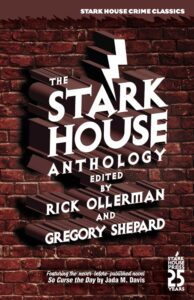 RICK: There’s a flavor and an immediacy to the best of it that is both of its time and timeless simultaneously. The best of it is absolutely addictive and some of the writing is amazing. I already mentioned Peter Rabe and when he was on he was as good as anybody, ever. But there’s also the great caper novels of Lionel White and the excitement of Harry Whittington and Gil Brewer, among others. There’s an unconscious emphasis on character that you couldn’t have today because of the emergence of things like DNA evidence and omnipresent cell phones. Novels today have to be constructed very differently to provide the same level of realism that books from the paperback original era could offer.
RICK: There’s a flavor and an immediacy to the best of it that is both of its time and timeless simultaneously. The best of it is absolutely addictive and some of the writing is amazing. I already mentioned Peter Rabe and when he was on he was as good as anybody, ever. But there’s also the great caper novels of Lionel White and the excitement of Harry Whittington and Gil Brewer, among others. There’s an unconscious emphasis on character that you couldn’t have today because of the emergence of things like DNA evidence and omnipresent cell phones. Novels today have to be constructed very differently to provide the same level of realism that books from the paperback original era could offer.
JEFF: It was a unique era in that for the first time in American history there was a genre aimed squarely at young men who had recently returned from the Second World War and the Korean Conflict. As morés loosened in the prewar era, paperback writers were able to create more gutsy, realistic fiction.
BILL: Stark House publications include titles spanning at least 120 years. I’ll leave the era nomenclature to others, but my own personal preference is 1930s—1950s fiction that features criminal activity. Once again this includes several subsets of binning, nomenclature wise, but most of the works from this era that Greg has published are relatively short (less than 200 pages), have character driven plots and feature excellent suspense and pacing. Many but not all have a social context, but lack today’s social issue lecturing quality and none incorporate soap opera-like plots where the protagonist will have burdens that satisfy the current taste for agony reveling, e. g. A detective will be an alcoholic, divorced, be guilty of various offenses against modern sensibilities, be back-stabbed by colleagues, one of whom he is having an unsuccessful affair with, have a relative dying of brain cancer and during the story a previously unknown daughter will appear who is a drug addict and a compulsive shop lifter and of course hates her father. All this will unravel, more or less, in a less than pithy 300 pages. Or more.
SCOTT: Can you talk about the sub imprints you have? Is there anyone else besides you working on those?
GREG: I pick most of the Black Gat Books and all of the Film Noir Classics. Jeff Vorzimmer and David Rachels manage the Staccato Crime Classics, and Jeff will occasionally suggest a Black Gat book.
BILL: Other than proofreading, my main involvement has been with the Black Gat and Film Noir series. I make no final selections, but “scout” prospective author’s works and submit my comments to Greg. The film noir series has proven fertile ground for rediscovery as the source books that form the basis (to varying degrees) of the movies have for the most part, been ignored. Given the differences for successful execution between the two media, there are often story and character differences of course, but we try to assess the books on their own terms when deciding to publish them or not.
JEFF: Staccato Crime focuses on a little earlier time period than the rest of the Stark House lines. We’re focused on noir fiction from 1899-1939 and not necessarily crime novels and not just fiction—as long as it’s noir. The slogan of Staccato is “Jazz Age Noir”.
SCOTT: One of the things associated with the Stark House reprints are the introductions by other authors or crime fiction experts. What do you see these adding to the books?
GREG: A lot of readers are interested in the era in which these books were written as well as the writers themselves. The introductions provide readers with information they can’t get anywhere else about these writers. Often comparisons are made to other, similar authors, whom the readers might also want to explore.
BILL: Aside from possibly biographical information, for which some reviewers have done some painstaking research, a good introduction will discuss the book on its own terms within the context of its times and, when relevant, provide some comparative analysis between the reviewed work and the author’s other works, or works by his/her contemporaries and perhaps what influence the author/work(s) have had upon those that follow. In sum, a good introduction will answer the question “Why would I find this book interesting?”
RICK: I’m not a particular fan of introductions that have spoilers or don’t do much beyond recapping the books. A good introduction provides insight, either by offering analysis of the author and his works or by placing them in a context the reader may not otherwise be aware of. When done well they excite the reader, and that anticipation should go beyond that of the book in front of them but possibly extend to the author’s other works or those of his or her contemporaries. A good introduction will enhance the reader’s experience with the book in front of them.
JEFF: A lot of readers are interested in the era in which these books were written as well as the writers themselves. The introductions provide readers with information they can’t get anywhere else about these writers. Often comparisons are made to other, similar authors, whom the readers might also want to explore.
SCOTT; Rick, You’ve written so many of these it grew into a book of essays: Hard Boiled, Noir, and Gold Medals. What is your approach to a good book intro?
RICK: I always try to find something new to say about an author’s work. The first thing is to read deeply into an author’s catalog, if not reading it entirely. I tend to focus more on the works themselves as opposed to the biographical details of the writer. I try to be widely read enough, both in the genre and out, to be able to compare characters, plots, themes, etc. and synthesize some sort of analysis of the author or his books. This can take different forms. In one piece I wanted to quantify why Peter Rabe is so different from other writers and I quoted a passage with all the “Rabe-isms” taking out. What was left was perfectly fine and read well. Then I put the missing words back in and the result was that Rabe’s unique style was evident.
For a piece on Charles Williams, I read his twenty-two novels and wrote about how and why some of his books were prototypical examples of noir from the paperback originals era. There were also two significant stories out there related to his death: one said he took his own life, the other that he simply swam away from his sailboat and drowned, eerily similar to a manner of death he’d used in his books. I obtained a copy of his death certificate in order to confirm what really happened.
In the case of the piece I did on Ed Gorman, he was so prolific the best I could do was read as much as I could in his various series across multiple genres as well as his standalones and short stories. I read the source stories for screenplays and watched the movies, all in an effort to offer a sort of career retrospective. When it was finished he told me it was something he could show his grandchildren. To do something like that requires hundreds of hours of preparation, mostly reading, of not only the author in question’s work, but often other works as well. To do the Malcolm Braly intro for his prison memoir, I read and studied not only other prison memoirs but autobiographical works by the author’s contemporaries so that I could find a context for the book. In short, I immerse myself in the author’s work and try to find a hook or approach I think will be interesting, informative, and ultimately valuable. I try to craft an essay as much as an introduction, a piece that can stand alone outside the book itself. I think that makes for the most interesting sort of introduction.
SCOTT: I notice you’ve picked more women writers in the past years. What precipitated that?
JEFF: The short answer is that there are more women crime readers than ever before as well as more bloggers and critics who specialize in women crime writers. Critics such as Sarah Weinman, who writes non-fiction true crime about female victims but also specializes in women crime writers of the 40s and 50s. So, there is a ready audience of reviewers of distaff crime writers of the paperback era.
GREG: I love all types of crime fiction. The first mystery author we published was Elisabeth Sanxay Holding, whose books I fell in love with in their old Ace Double editions. I pursued more women authors because I enjoy reading them. Some of them have been recommended by Curtis Evans or Bill Kelly, some are old favorites. I enjoy a lot of variety in my reading. Also, I just wanted to balance things out.
SCOTT: You have published new authors. What are you looking for in those works?
GREG: The new authors I have published have all submitted books that I enjoyed reading. It’s no more complicated than that. Our first new author was Charlie Stella, who was recommended by Ed Gorman. A great place to start.
BILL: The classic qualities of what makes a book a good book: Characterization-driven plotting; a story with twists and turns we haven’t all seen many times before; vivid sense of place; effective pacing unmarred by lengthy social hobby horse digressions, pandering, lecturing, etc. Social issues are of course relevant are of course/can be formative in both characterization and story, but these “issues” have to belong to the characters in the story and not to the author or reader, i. e., real life vs. ideological intent. Some contemporary works tend to evoke a deliberate cinematic form which will work if the characterizations and the story are not altered for the sake of a good scene, e. g. a character makes a decision based upon what will make an exciting scene [draw a gun] when based on his/her character, we have already learned they are frightened of guns.
SCOTT: Rick, you are one of those authors. Who are some of the classic authors Stark House has published who have influenced you?
RICK: I’ve mentioned Peter Rabe repeatedly. No one else writes like Peter Rabe and to try to imitate his style would undoubtedly come off as cheap imitation. But admiring his willingness to zig when others zag helps, I think, have a freeing effect. The pure fun and pull of a good Harry Whittington or Gil Brewer story inspires me to try to capture the same sort of spirit. There’s a competence to Lionel White that sets a certain standard. James Hadley Chase had never really been in America yet was able to (mostly) successfully place his stories here, and I find that inspirational as well (excluding the Faulkner plagiarism).
SCOTT: How would you describe your work?
RICK: I try not to. I think it’s best that an author leave that question to their readers. I know what I hope a reader gets out of something I’ve written but it’s up to them to decide how successful I’ve been. I like to think my books are readable, difficult to put down, that they play fair with the reader, and that the climax is not something that will be obvious until you get there.
SCOTT: Greg and Rick, you both served as editors The Stark House Anthology to celebrate the 25th anniversary. What was your major goal with the project?
RICK: I wanted to put something into the world that would make a statement, to plant a flag that says “Stark House is here.” The idea was to do a collection of authors that had all been previously published by Stark House and serve as a sampler to these quintessential paperback original era authors. Including the previously unpublished Jada Davis book, So Curse the Day, is the cornerstone. Davis wrote one of the all-time great hardboiled noirs in “One for Hell” (reprinted by Stark House) and epitomizes the kind of discovery Stark House offers. Hopefully the anthology is a book with legs and with its many stories and authors stays around the genre for many years.
GREG: To celebrate the authors who inspire us.
SCOTT: Was there any author whose work you wanted, but couldn’t get?
RICK: There was no one specifically. There were some authors I would have liked to include but simply couldn’t find a story I liked enough. Not all good novelists are good short story writers, and vice versa, so there’s often a balance. It was cool to be able to include Orrie Hitt’s only published short story….The story had more of a cache in the era it was published.
SCOTT: One of the best pieces in it is that novella by Jada M. Davis, a writer few know about. Stark House republished and published his discovered work. What has made him worth Stark House championing?
GREG: One for Hell is just one helluva book. I think it was Ed Gorman who turned me on to that one. Might have been Rick. But for that book alone Jada Davis should be championed.
RICK: Jada Davis’s One for Hell should be a classic, on the same shelf as The Postman Always Rings Twice and The Killer Inside Me. But until Stark House published it, I’d never heard of it. Davis only published two books in his lifetime, One for Hell and The Outraged Sect. In one sense it’s the story of a bad man happening to a good town. The only other book he published in his lifetime, The Outraged Sect, has the opposite theme, it’s the story of a good man in a bad town. It’s an interesting counterpoint to One for Hell but doesn’t achieve the same impact. Davis’s son, Mark, brought forth the unpublished Midnight Road, a different sort of book entirely, a coming of age story that’s a very solid read. When Mark revealed So Curse the Day, it hit me as being a quintessential Gold Medal-type book; it would have been a perfect title for the line. Davis was clearly immensely talented and had he put more of his time into writing books he would have been up there with the greats. Including this book in the anthology was very important to me—I thought it epitomized the idea of the “lost Gold Medal” book, the kind of discovery Stark House is known for.
SCOTT: Do you have any “white whale” authors or books you’d like to republish?
GREG: I’m finally getting a chance to reprint some David Goodis, who was one of the first crime authors I fell in love with besides Chandler and Hammett. I suppose I’d like to reprint some of Jim Thompson’s works if the rights became available. Perhaps some of John D. MacDonald’s standalones.
BILL: My personal wish; I have no decision power: The Hands of Orlac by Maurice Renard (1981 Souvenir Press translation)—wonderful book that is much richer than any of the numerous filmed versions, although of course a couple of these are excellent movies. A hen’s tooth item in translation, so of course pricey, unknown to most readers. One key difference is the use of protagonist: in the novel the wife is the featured character until the end when a policeman drives the narrative. An oddball book in any time for the switch in protagonists, but a genre bending combination of mysticism, horror and crime fiction.
SCOTT: What plans do you have for Stark House’s future?
GREG: Just more of what we’re already doing. I’d like to include a few more early 20th century books, which is a period that I particularly enjoy. They don’t sell as well, but they’re fun to produce. Right now I’m trying to get Robert Hichens’ stories back into print. I have no idea if there are a lot of Stark House readers who agree, but find them a welcome respite from modern times.
I enjoy finding new titles for the Film Noir Classics. There might be room for a new series, who knows? I keep an open mind.



